Dacia Duster vs Hyundai i20 – Performance, range & efficiency compared
Costs and Efficiency:
When it comes to price and running costs, the biggest differences usually appear. This is often where you see which car fits your budget better in the long run.
Dacia Duster has a hardly perceptible advantage in terms of price – it starts at 16300 £, while the Hyundai i20 costs 17400 £. That’s a price difference of around 1123 £.
Fuel consumption also shows a difference: Dacia Duster manages with 4.70 L and is therefore slightly more efficient than the Hyundai i20 with 5.20 L. The difference is about 0.50 L per 100 km.
Engine and Performance:
Power, torque and acceleration are the classic benchmarks for car enthusiasts – and here, some clear differences start to show.
When it comes to engine power, the Dacia Duster has a clearly perceptible edge – offering 158 HP compared to 100 HP. That’s roughly 58 HP more horsepower.
In acceleration from 0 to 100 km/h, the Dacia Duster is slightly quicker – completing the sprint in 9.40 s, while the Hyundai i20 takes 11.10 s. That’s about 1.70 s faster.
In terms of top speed, the Hyundai i20 performs barely noticeable better – reaching 183 km/h, while the Dacia Duster tops out at 180 km/h. The difference is around 3 km/h.
There’s also a difference in torque: Dacia Duster pulls a bit stronger with 230 Nm compared to 200 Nm. That’s about 30 Nm difference.
Space and Everyday Use:
Whether family car or daily driver – which one offers more room, flexibility and comfort?
Both vehicles offer seating for 5 people.
In curb weight, Hyundai i20 is distinct lighter – 1088 kg compared to 1377 kg. The difference is around 289 kg.
In terms of boot space, the Dacia Duster offers noticeable more room – 517 L compared to 352 L. That’s a difference of about 165 L.
In maximum load capacity, the Dacia Duster performs evident better – up to 1609 L, which is about 444 L more than the Hyundai i20.
When it comes to payload, Hyundai i20 barely noticeable takes the win – 472 kg compared to 453 kg. That’s a difference of about 19 kg.
Who comes out on top?
Overall, the Dacia Duster shows itself to be is largely superior and secures the title of DriveDuel Champion.
It convinces with the more balanced overall package and proves to be the more versatile choice for everyday use.
Costs and Consumption
View detailed analysis
Engine and Performance
View detailed analysis
Dimensions and Body
View detailed analysis
 @ Dacia / Renault Group Media
@ Dacia / Renault Group Media
Dacia Duster
Dacia Duster
The Dacia Duster is a no-nonsense compact SUV that delivers rugged practicality and surprisingly comfortable everyday driving without fuss. It might not win any beauty contests, but its honest design, easy-to-live-with cabin and tough attitude make it a smart pick for buyers who want reliable transport without luxury frills.
details @ Dacia / Renault Group Media
@ Dacia / Renault Group Media
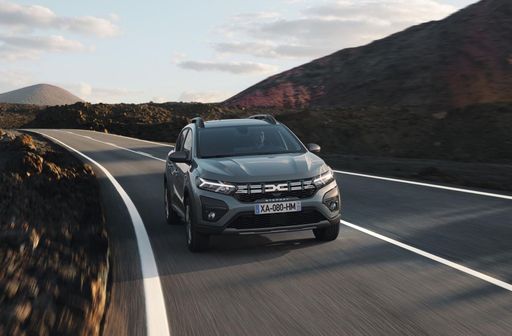 @ Dacia / Renault Group Media
@ Dacia / Renault Group Media
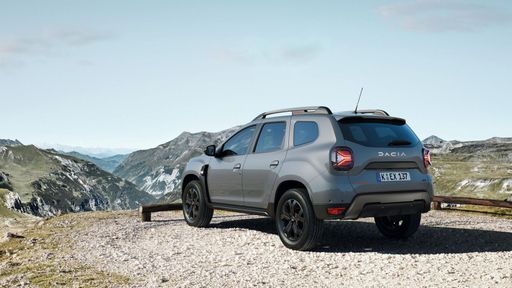 @ Dacia / Renault Group Media
@ Dacia / Renault Group Media
 @ Dacia / Renault Group Media
@ Dacia / Renault Group Media
Hyundai i20
The Hyundai i20 is a cheeky small car that mixes smart styling with sensible practicality, feeling more polished and roomy than you might expect for the money. It’s an easy car to live with, offering engaging handling, a comfy cabin and useful equipment that make daily commutes and weekend errands notably less dull.
details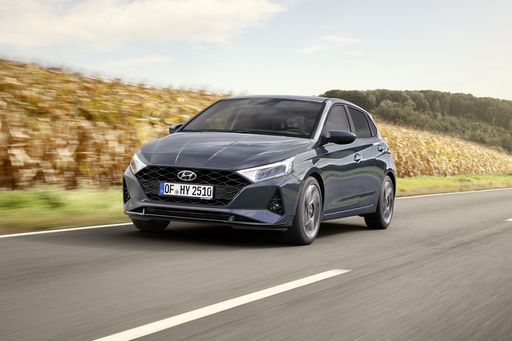 @ Hyundai Motor Company
@ Hyundai Motor Company
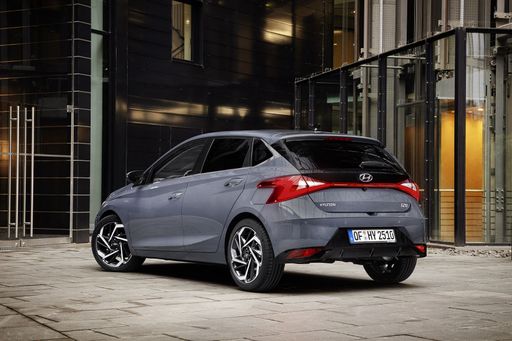 @ Hyundai Motor Company
@ Hyundai Motor Company
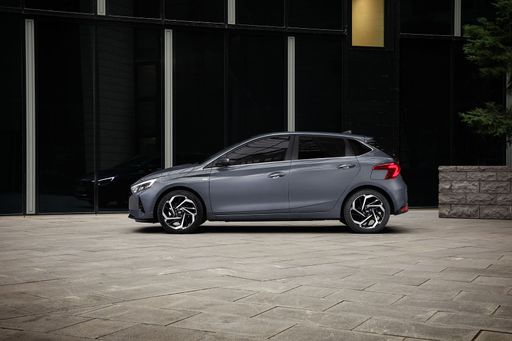 @ Hyundai Motor Company
@ Hyundai Motor Company
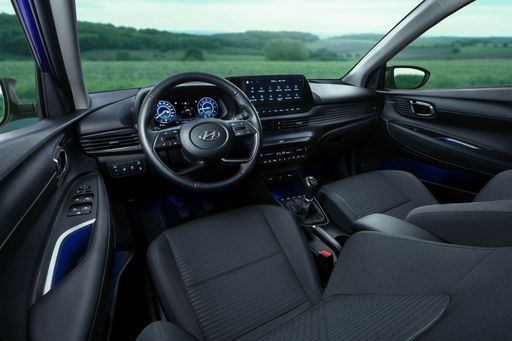 @ Hyundai Motor Company
@ Hyundai Motor Company
 @ Hyundai Motor Company
@ Hyundai Motor Company
 @ Dacia / Renault Group Media
@ Dacia / Renault Group Media
|
 @ Hyundai Motor Company
@ Hyundai Motor Company
|
|
|
|
Costs and Consumption |
|
|---|---|
|
Price
16300 - 24900 £
|
Price
17400 - 24000 £
|
|
Consumption L/100km
4.7 - 7.5 L
|
Consumption L/100km
5.2 - 5.3 L
|
|
Consumption kWh/100km
-
|
Consumption kWh/100km
-
|
|
Electric Range
-
|
Electric Range
-
|
|
Battery Capacity
0.60 kWh
|
Battery Capacity
-
|
|
co2
107 - 124 g/km
|
co2
119 - 121 g/km
|
|
Fuel tank capacity
50 L
|
Fuel tank capacity
40 L
|
Dimensions and Body |
|
|---|---|
|
Body Type
SUV
|
Body Type
Hatchback
|
|
Seats
5
|
Seats
5
|
|
Doors
5
|
Doors
5
|
|
Curb weight
1377 - 1455 kg
|
Curb weight
1088 - 1190 kg
|
|
Trunk capacity
348 - 517 L
|
Trunk capacity
352 L
|
|
Length
4343 mm
|
Length
4065 - 4075 mm
|
|
Width
1813 mm
|
Width
1775 mm
|
|
Height
1656 - 1659 mm
|
Height
1450 - 1455 mm
|
|
Max trunk capacity
1414 - 1609 L
|
Max trunk capacity
1165 L
|
|
Payload
450 - 453 kg
|
Payload
450 - 472 kg
|
Engine and Performance |
|
|---|---|
|
Engine Type
Petrol MHEV, Full Hybrid, LPG
|
Engine Type
Petrol
|
|
Transmission
Manuel, Automatic
|
Transmission
Automatic, Manuel
|
|
Transmission Detail
Manual Gearbox, Automated Manual, Dual-Clutch Automatic
|
Transmission Detail
Dual-Clutch Automatic, Manual Gearbox
|
|
Drive Type
Front-Wheel Drive, All-Wheel Drive
|
Drive Type
Front-Wheel Drive
|
|
Power HP
115 - 158 HP
|
Power HP
79 - 100 HP
|
|
Acceleration 0-100km/h
9.4 - 11.6 s
|
Acceleration 0-100km/h
11.1 - 13.7 s
|
|
Max Speed
180 km/h
|
Max Speed
166 - 183 km/h
|
|
Torque
190 - 230 Nm
|
Torque
113 - 200 Nm
|
|
Number of Cylinders
3 - 4
|
Number of Cylinders
3 - 4
|
|
Power kW
84 - 116 kW
|
Power kW
58 - 74 kW
|
|
Engine capacity
1199 - 1789 cm3
|
Engine capacity
998 - 1197 cm3
|
General |
|
|---|---|
|
Model Year
2025
|
Model Year
2024
|
|
CO2 Efficiency Class
D, C
|
CO2 Efficiency Class
D
|
|
Brand
Dacia
|
Brand
Hyundai
|
What drivetrain options does the Dacia Duster have?
The Dacia Duster is offered with Front-Wheel Drive or All-Wheel Drive.
The prices and data displayed are estimates based on German list prices and may vary by country. This information is not legally binding.
